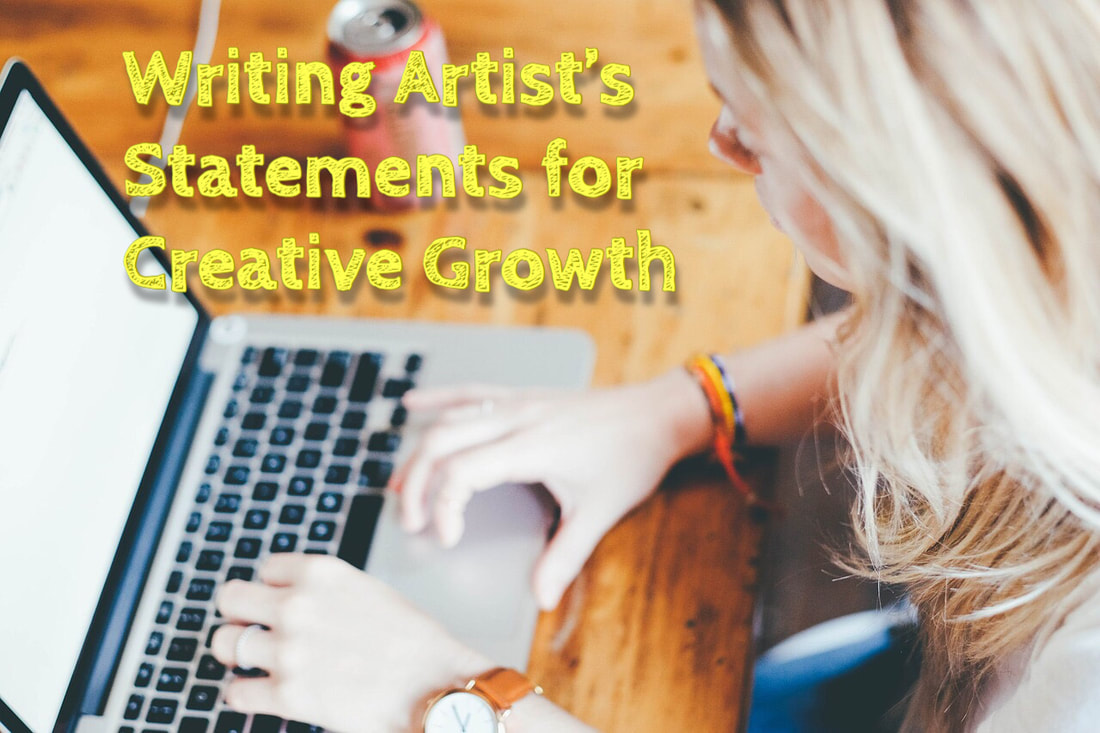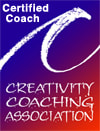|
An artist’s statement is similar to a cover letter for a resume. If it is for a specific piece, a program or a show, you are telling viewers about specific works- what for you ties them together. For a website, marketing, sales etc you may choose to speak more generally about your work historically and/or the period of work you are in. It is your chance to give a mini-documentary about the pieces you are making- a peek into your brain of motivation, inspiration and creation.
From a wellness perspective, I always encourage artists to have a working version of their artists statement, as a sort of touchstone for themselves and their relationship to their artwork. Exploring and knowing this relationship as it evolves and changes helps facilitate momentum and flow in the creative process. If this is your first foray into artist statement writing, or your first try in awhile, my advice to you is to write. It. All. Write all the things. Put fingers to keyboard, pen to paper and begin a free flow of ideas that come from nowhere and everywhere and eventually tap into the same place in your body that you create from. Keep it going until you feel done. In the same sitting you might make a maximum of one to three passes over your work to loosely consolidate and synthesize the general feeling of your statement, then put it away. You can come back to it hours later or maybe even the next day. The goal is to leave enough space so as to try not to get bogged down in words or married to sentences- but look at it asking yourself- how are these words reflecting the messages and spirit of my work? Make another one to three passes for clarity then set it aside. Rinse and repeat this process until you feel you have captured the spirit of your work. When you have that accomplished, you may go back through and look for more editorial things like length- generally a paragraph or so is pretty good- use of pronouns- we can overuse them inadvertently when communicating our own perspective- and so on. If you feel comfortable, have another person look at the statement only to see if anything like grammar or composition interferes with the message you are trying to communicate. You may also consider reflecting the type of media you use, the tempo or pace at which you use it, the volume (loudness and softness) of your work, thematic content, referential content, inspirational content, autobiographical content and more in your statement. As you write you may find the words compositionally mimic your work in various ways as well as describe it. Ultimately the statement will serve as a cognitive bridge both for you and your spectator to better understand your art. A quick word of caution about the “confusion phase”: many people (I among them) when writing an artist’s statement will reach this critical juncture. The statement becomes so chock full of content that even the writer loses focus of what they are trying to say. Don’t worry- the information is in there. This is a good indicator of a time to take a step away and come back again- and the messages you started with will again become clear to you. A final word about fluidity: like your work, your artist’s statement will be ever changing. Don’t forget to save earlier versions that reflect points in time just as your earlier works do- but also don’t be afraid to regularly revisit your artist’s statement and see how your purpose for art is changing and evolving and address that to yourself and document the flow. Your artist’s statement is, after all, a sort-of formalized documentation of your evolution as an artist and how that changes your work, how your work changes you, and life impacts you both. Happy writing! (C) 2019 Creatively, LLC |
get more from The Creativity CoursesLiking educational topics and knowing what's hot in creativity? Creatively has online courses, with an interactive creative community, coaching sessions and more in the Creativity Courses. Want these blogposts in a newsletter? Subscribe here, and get a free gift. Cindy Cisnerosis a Creativity Coach, Creative Therapist and Professional Artist in Sykesville, Maryland. She is an expert straddling the realms of arts, creativity research, psychology, therapy, and coaching. She provides Online Creativity Counseling in Maryland and Virginia, and Online Creativity Coaching throughout the USA, Canada and the UK tailored for the discerning, imaginative, artistic, and neurodiverse. The information provided in this blog is from my own clinical experiences and training. It is intended to supplement your clinical care. Never make major life changes before consulting with your treatment team. If you are unsure of your safety or wellbeing, do not hesitate to get help immediately.
Archives
July 2024
|
|
Concierge Therapy for Creatives in Maryland
Creativity Coaching Worldwide including the USA, UK and Canada |
Telephone |
|


 RSS Feed
RSS Feed

